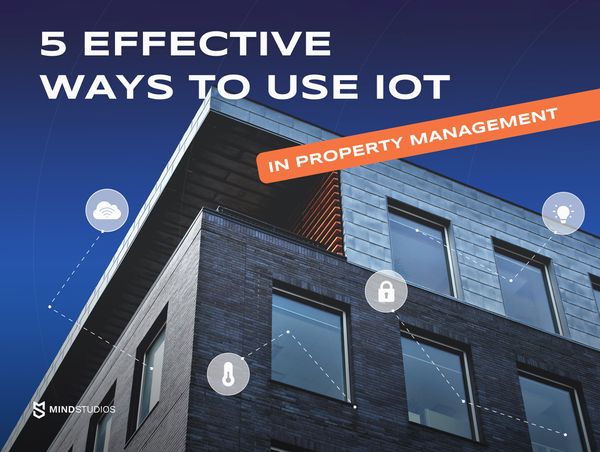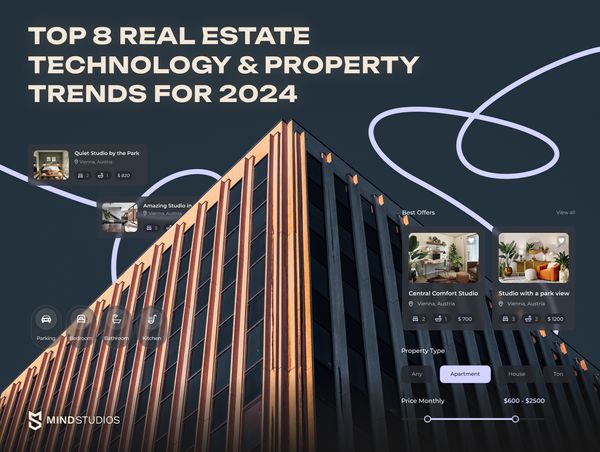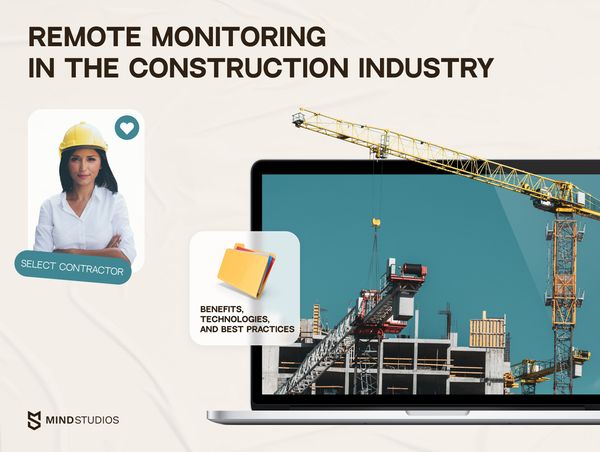
In the not-so-distant past, the construction industry heavily relied on human labor, necessitating constant oversight on-site, leading to challenges such as safety risks and inefficiencies. Fortunately, thanks to the technological transformation in the construction sector, with construction remote monitoring being a huge part of it, these challenges can now be addressed and mitigated.
With the use of IoT (Internet of Things) sensors, drones, and real-time analytics, remote monitoring systems today can collect and analyze comprehensive data in real time, enhancing precision and changing the way the construction process is managed.
So, how exactly does remote monitoring in construction work? What are the main benefits and use cases? And are there any significant challenges professionals in the field need to be aware of? As software developers who specialize in real estate and construction solutions, we’ve researched the matter to answer all these questions in this article. Let’s dive in.
Benefits of remote construction monitoring
Remote monitoring in construction is like having a digital foreman keeping an eye on every operation on the construction site from a control room instead of standing on the scaffolding.
This advanced technology involves using sensors, cameras, and other monitoring devices that collect real-time data and analyze construction site activities from a centralized location. The data is then transmitted to a control center, where project managers can assess it and make informed decisions without the need for on-site supervision.
In the list below, we’ve highlighted the most significant advantages of remote construction site monitoring.
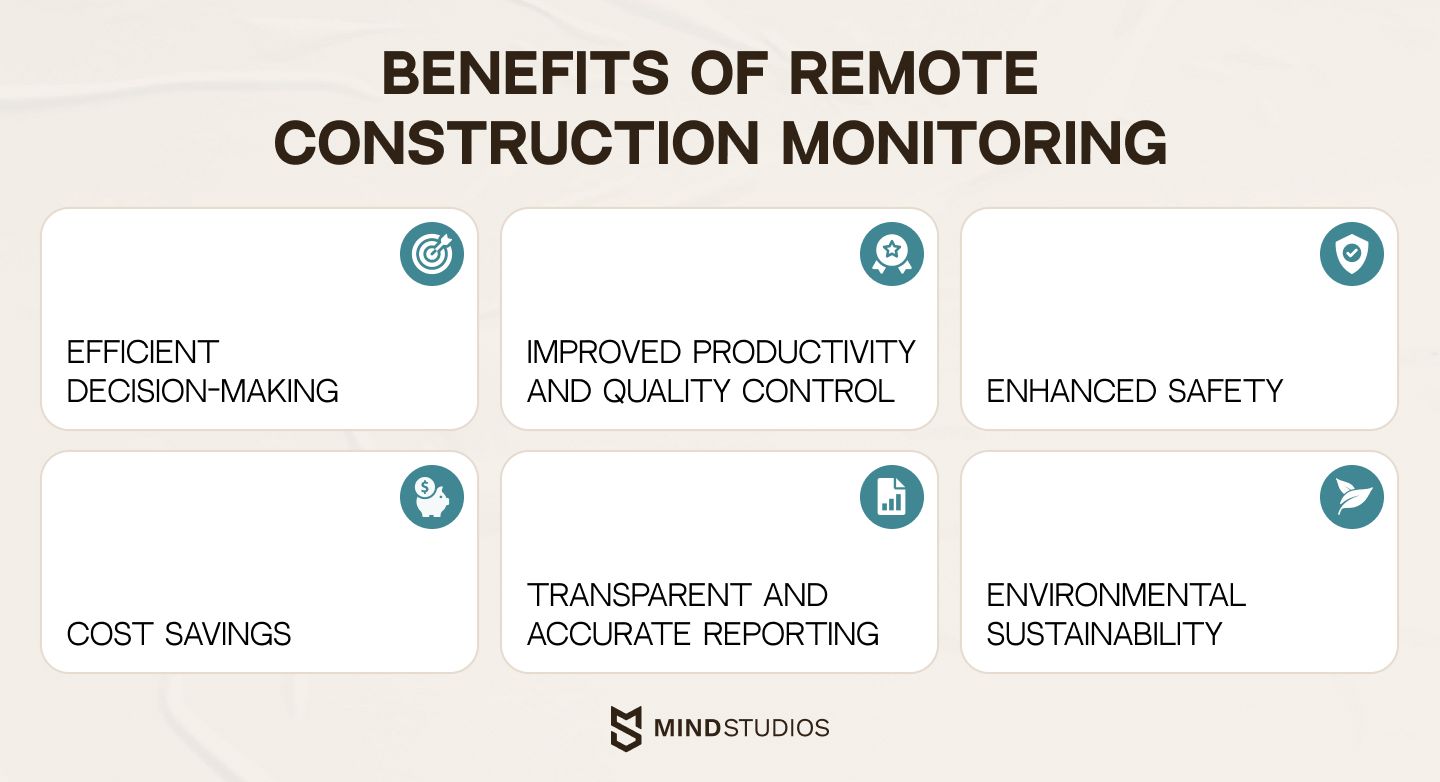
Efficient decision-making
Remote monitoring systems use advanced sensors, cameras, and IoT devices strategically placed across the construction site. As a result, project managers receive real-time updates on everything regarding construction operations, from equipment usage to environmental conditions. Thanks to such an up-to-the-minute view of project progress, project managers can make timely and efficient decisions and proactively address any challenges that arise.
Essentially, remote monitoring helps prevent small hiccups from snowballing into major setbacks. For instance, with this technology, issues like delayed material deliveries or equipment malfunctions won’t significantly impact construction timelines and overall project success.
Improved productivity and quality control
Thanks to a continuous stream of data from monitoring devices, project managers can timely and effectively identify bottlenecks, optimize workflows, and allocate resources more efficiently. Let’s say there is a construction site area experiencing delays. With data analytics, the team can quickly determine the cause, which may be a shortage of materials or a need for additional human resources.
Moreover, remote monitoring not only enables seamless adjustments and strategic decision-making but also ensures that the project complies with quality standards and contributes to its overall success.
Enhanced safety
Since remote monitoring minimizes the need for on-site control, it fosters a secure work environment. Sensors and cameras help professionals detect potential safety hazards. Project managers can then quickly address the issue, thus mitigating risks, preventing accidents, and ensuring the well-being of on-site personnel.
For instance, if a sensor detects an abnormality in equipment operation, it triggers an immediate alert to the control center, enabling prompt intervention before the situation escalates. Such a proactive approach instills a sense of confidence and security among construction professionals, which is crucial for a healthy workplace.
Cost savings
In addition to dealing with safety hazards, real-time data analytics and insights help project managers identify operational inefficiencies, optimize workflows, and minimize downtime. For example, by analyzing the data collected from sensors on equipment, construction professionals can predict when maintenance is needed before a breakdown occurs.
On top of that, by remotely overseeing the construction process, the team can significantly reduce time and travel expenses that otherwise would be allocated to on-site supervision.
Transparent and accurate reporting
Automated data collection and processing eliminates the need for manual data entry and ensures that reports are based on accurate, up-to-date information. Project managers can effortlessly track the progress of tasks, monitor resource consumption, evaluate safety metrics, and more, all through a centralized platform.
As a result, the construction company gets a more transparent and accountable construction process, where stakeholders have continuous visibility into project activities, timelines, and milestones.
Environmental sustainability
As we’ve mentioned earlier, the integration of sensors and monitoring devices allows construction professionals to manage resources more efficiently. This, however, influences not only costs but environmental impact as well.
For instance, data collection and analysis can help the team manage resource consumption, energy usage, and waste generation. If the sensors detect excessive material waste or another issue, project managers can quickly implement corrective measures and optimize resource efficiency, thus minimizing the project’s ecological footprint.
Key technologies for construction site monitoring
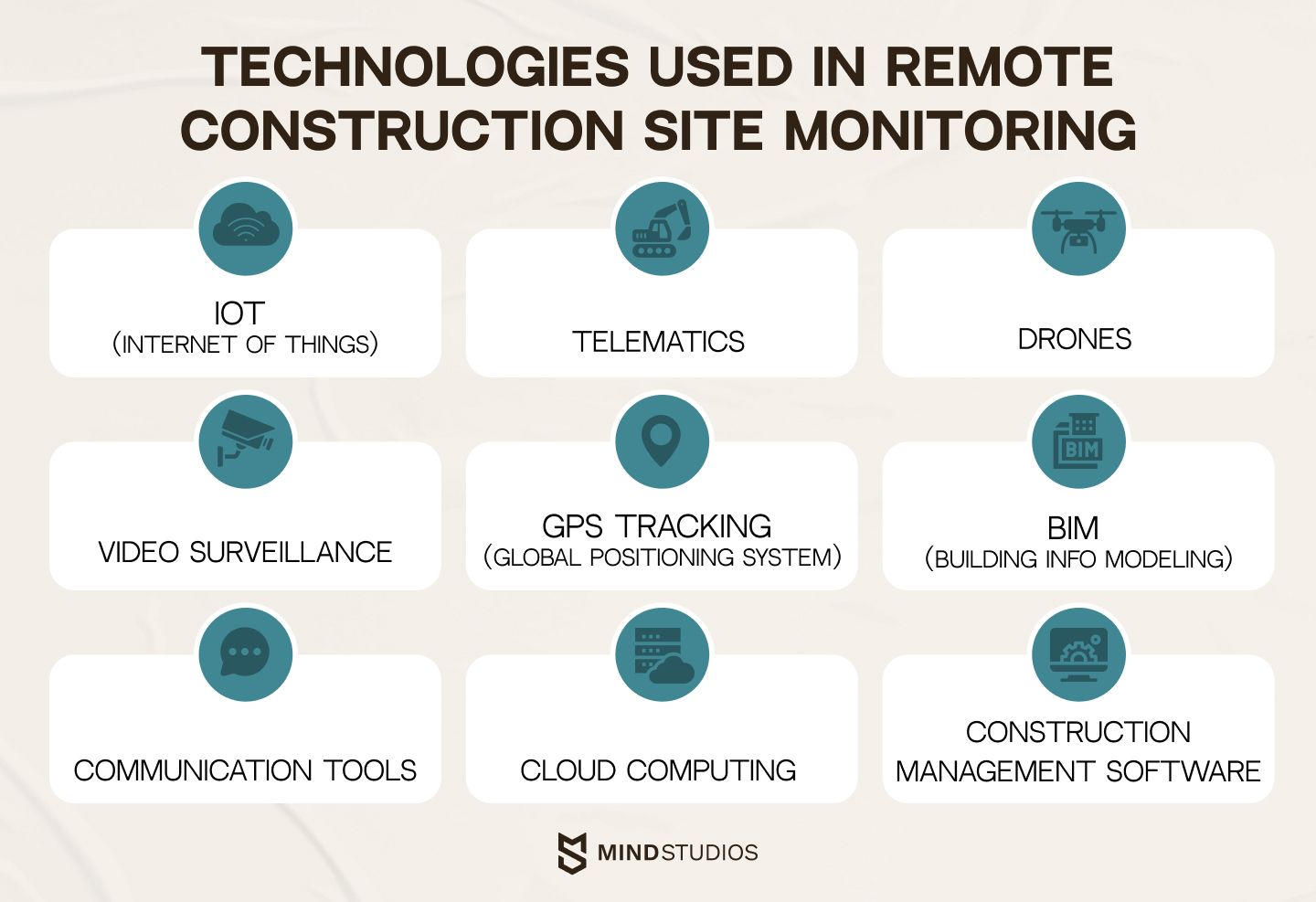
Remote construction monitoring systems aren't a singular technology but a complex combination of both hardware and software components that have to work in harmony to collect and process real-time data. In this section, we cover the most essential elements of the technological ecosystem for remote construction monitoring.
| Technology | How it works |
|---|---|
| IoT (Internet of Things) | IoT in remote construction monitoring is a digital network of sensors and devices placed strategically around the site. Connected to the internet, they constantly collect and share information with a central hub where project managers overview the real-time picture of what's happening. The devices typically include sensors on equipment, wearables for workers (smart helmets, vests, etc.), and environmental sensors. |
| Telematics | Telematics systems monitor and track construction equipment's location, movement, and performance. The data they collect can be accessed remotely to ensure that equipment is used efficiently, and to schedule maintenance when necessary. |
| Drones | Drones used in construction are equipped with cameras and sensors to provide aerial views of the sites, allowing for real-time monitoring of the whole area. They are particularly handy for surveying, progress tracking, and identifying potential issues. |
| Video surveillance | Typically, cameras and video surveillance systems are used on construction sites for security reasons. However, they can also help monitor the construction progress, obtain visual project documentation, and identify safety concerns. |
| GPS (Global Positioning System) tracking | GPS technology is used in construction to track the location of vehicles, equipment, and workers on the site. It helps in logistics, scheduling, and overall project management. |
| Building Information Modeling (BIM) | BIM is a digital representation of the physical and functional characteristics of a building that enables effective collaboration and coordination between different stakeholders. |
| Communication tools | Audio and video conferencing tools, project management apps, and other collaboration solutions facilitate effective communication among team members, even when they are not physically present at the construction site. |
| Cloud computing | In case the construction company uses cloud computing, all the collected data on the project is stored and processed in cloud-based systems, making it accessible to authorized stakeholders. This approach ensures scalability, security, and easy access. |
| Construction management software | A construction management software platform is a comprehensive digital command center that is used to establish a seamless and efficient construction management experience. This platform consolidates the technologies mentioned on this list, offering project managers a holistic, real-time understanding of the construction process. It empowers the construction team to proactively address issues, optimize resources, enhance safety, and ensure smooth project execution. |
Use cases and real-life examples of construction remote monitoring
We’ve already established that remote monitoring in construction can redefine the way projects are managed. But how does it work in practice? In this section, we explore just that.
Progress monitoring
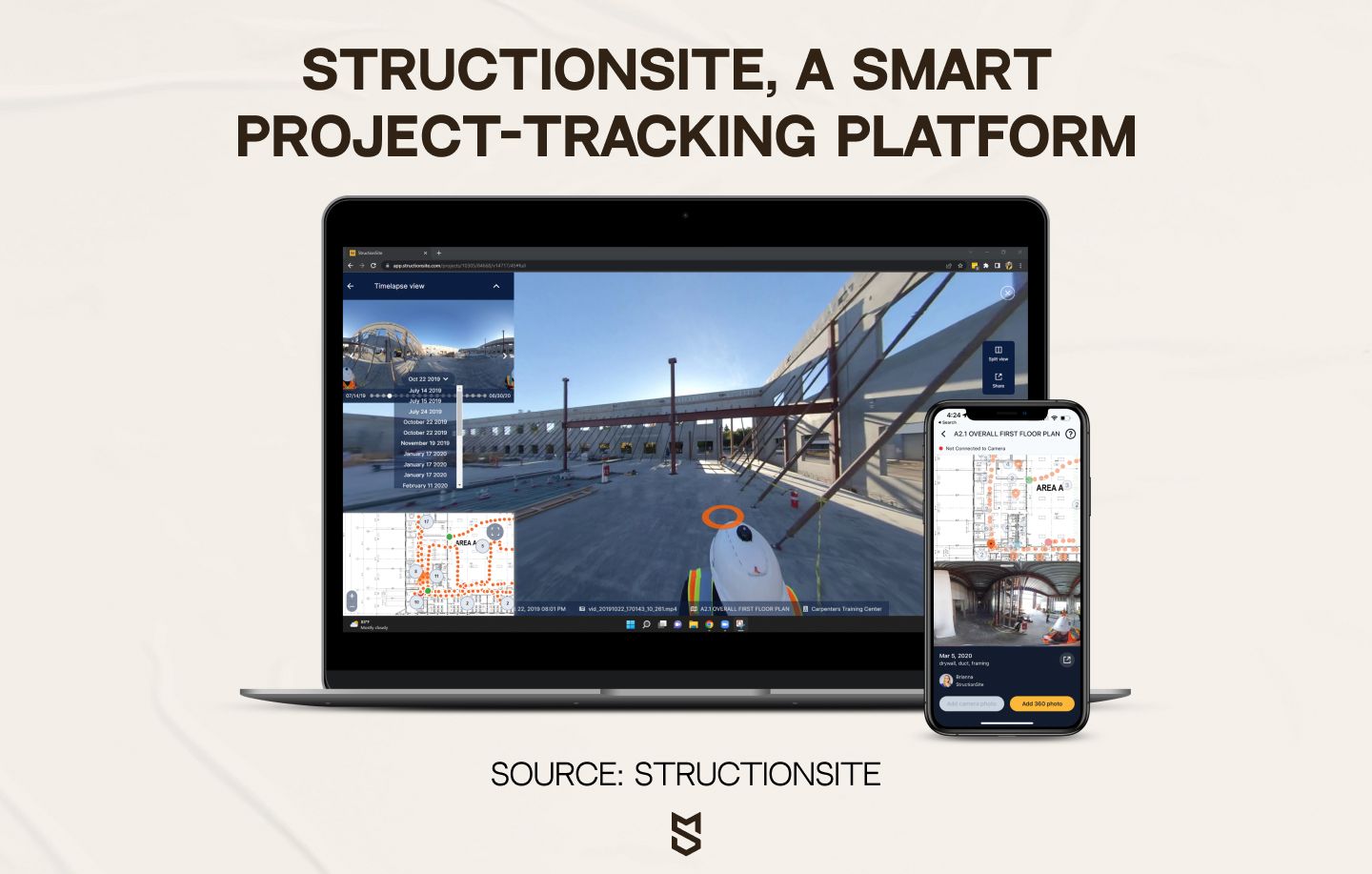
[Source: StructionSite]
With the use of cameras, drones, and various sensors, professionals involved in remote construction monitoring can track different aspects of the project’s progress without being physically present at the site. This can cover material deliveries and usage, the real-time status of construction activities, workforce activities, etc. For example, some construction companies use StructionSite, a platform that combines 360-degree cameras and artificial intelligence to provide virtual walkthroughs of construction sites.
Equipment monitoring
Telematics systems and IoT sensors on construction equipment collect data on location, usage, and performance, alerting the project managers of any potential issues in real time. One example of such systems is Cat Connect created by Caterpillar, an American construction, mining, and engineering equipment manufacturer. One of its products includes telematics tools used to monitor the health and usage of construction equipment, helping companies make the most of the machinery they have.
Safety monitoring
Most often, this use case involves wearable devices and sensors for monitoring the health and safety of workers on the construction site. The features include location tracking, vital signs monitoring, and environmental conditions.
Cat Connect, for example, offers a safety technology that aims to make sites safer. Its proximity-sensing systems limit machine movement in tight spaces, while its cameras and sensors keep operators informed about equipment and personnel working nearby. Another example is the Spot-r system by Triax Technologies, which features wearables for workers. The devices automatically alert supervisors about potential safety hazards and track the location of workers.
Structural health monitoring
Sensors for structural health monitoring serve as an early warning system used to monitor the structural integrity of buildings and other construction objects. They detect shifts and unusual vibrations or movements, monitor strain and stress levels, and keep track of other factors. If the sensors detect anything out of the ordinary, they alert the managers about the issue.
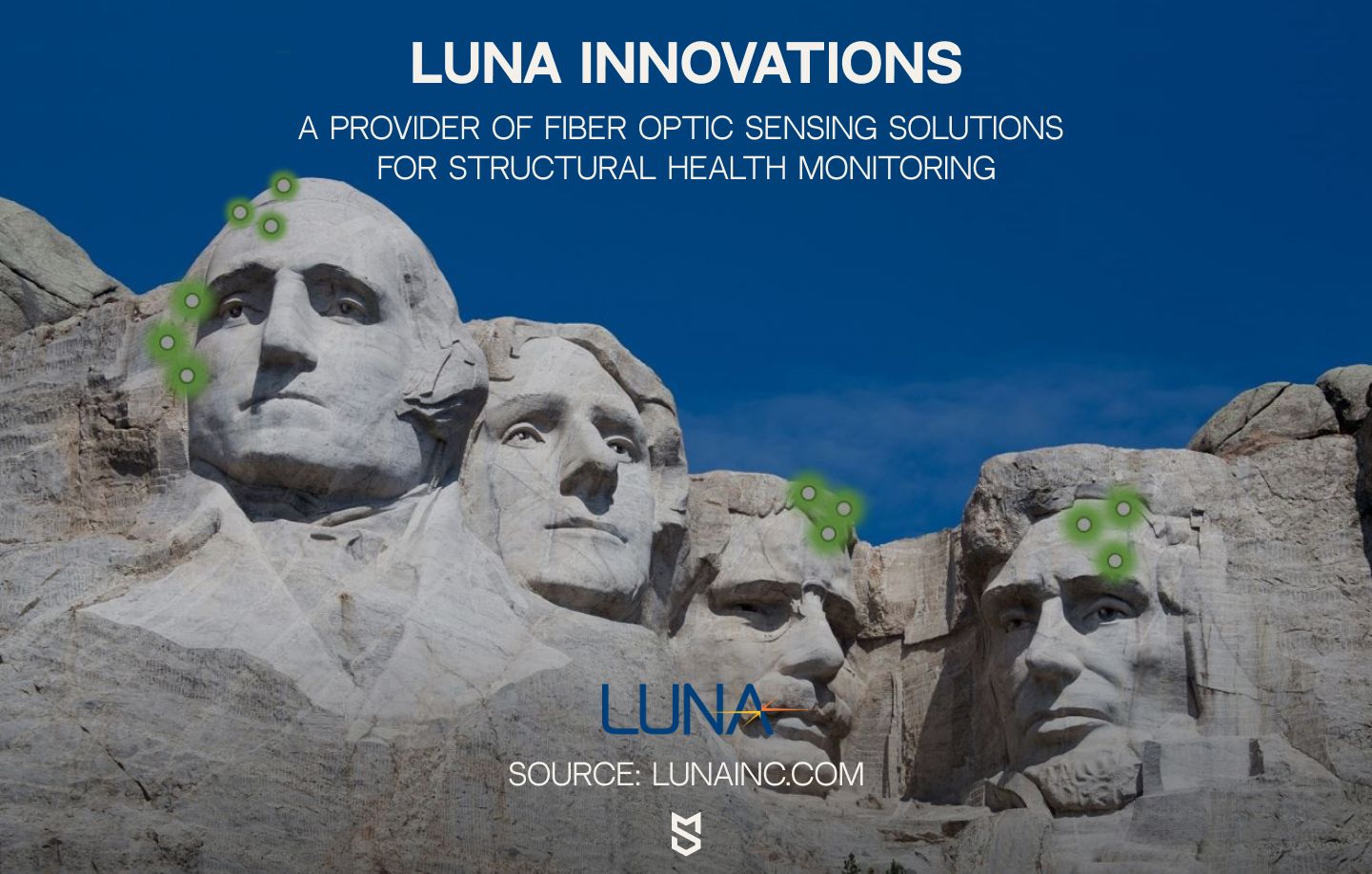
[Source: Luna Innovations]
Companies like Luna Innovations offer fiber optic sensing solutions for structural health monitoring. Such sensors use optical fibers to measure strain, temperature, and other parameters. Their core advantage is distributed sensing along the entire fiber length, which means high-resolution data for detecting subtle changes in the structure's behavior. The company’s service was even used for the Hong Kong railway and Mount Rushmore rock block monitoring.
Material tracking
Construction monitoring systems for material tracking involve using technology to monitor construction materials' movement, usage, and status. Typically, RFID tags, barcodes, or GPS trackers are attached to materials to transmit their data to a centralized system. For example, RFID tags on pallets of concrete can be scanned as they enter the construction site, providing real-time data on the quantity and location of materials.
Why does it matter? With the help of this technology, project managers can efficiently manage inventory, prevent material shortages, and optimize the use of resources. For instance, by using the Procore cloud-based construction management platform, the team can input and track quantities of materials, assign barcodes or QR codes, and update the status of materials as they move through the project lifecycle.
Environmental monitoring
Remote construction monitoring systems for environmental supervision employ various technologies to track and assess the environmental impact of construction activities. Sensors can be deployed to measure air and water quality, noise levels, and other parameters. This data helps ensure compliance with regulations and provides early warnings for a potentially harmful environmental impact.
By implementing environmental monitoring solutions, companies commit to a more mindful and sustainable approach to construction. For instance, Dempsey Wood Civil, a construction company from New Zealand, collaborated with Adroit, a distributor of an IoT manufacturer Libelium. Together, they implemented an IoT environmental monitoring solution aimed at establishing construction sites that mitigate any disruption in the environment.
Wil Killip, innovation engineer at Dempsey Wood, shared: “We have received complaints from neighbors in the past, but now, thanks to the dust level control, we receive early warnings that enable us to take quick measures, such as irrigating the soil with water to mitigate it.”
To sum up, all these use cases exemplify how remote monitoring technologies in construction contribute to better project outcomes, worker safety, and overall efficiency.
Challenges in construction monitoring and best practices for overcoming them
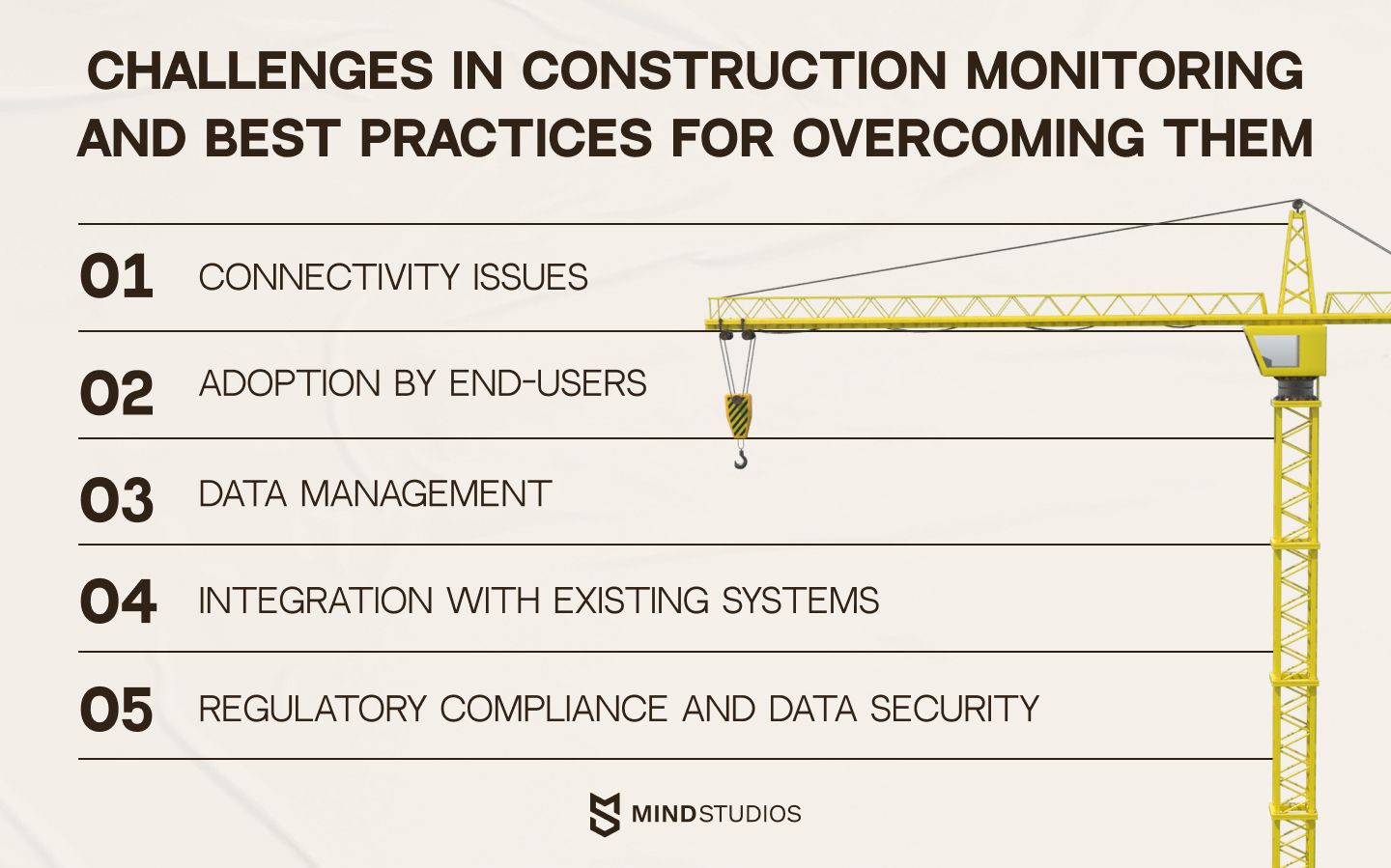
Creating a successful and effective construction site monitoring system requires solid technical expertise, legal knowledge, creativity, and ethical responsibility. Shortly put, the process is quite demanding. However, while this path can be full of challenges, all of them are manageable. Let’s go over the most significant issues and solutions to them.
Regulatory compliance and data security
Implementing remote monitoring systems in construction requires in-depth knowledge of legal aspects. After all, it directly impacts the safety of the workers on site. Construction projects involve handling a vast amount of confidential information, including project plans, financial data, and personnel details. Therefore, regulatory compliance and data security are critical in this industry.
The challenge here can be the exchange and storage of data that can be susceptible to cyber threats. Construction site monitoring solutions require a robust cybersecurity infrastructure to minimize the risk of unauthorized access, data breaches, and potential legal consequences.
Solution: To address this issue, construction companies must incorporate encryption protocols, access controls, and regular cybersecurity audits. It’s also important to consult with cybersecurity experts and monitor evolving industry regulations, ensuring the monitoring system aligns with legal standards.
Connectivity issues
Remote monitoring systems rely heavily on real-time critical data transmission from sensors and devices. However, remote locations can face disruptive limitations in stable and consistent internet connectivity. This can lead to delays and even jeopardize the safety of the construction site.
Solution: To address this challenge, we recommend investing in robust communication infrastructure, implementing failover mechanisms, and exploring alternative connectivity options, such as satellite or cellular networks. Implementing such technologies ensures that even if one connection fails, another steps in seamlessly. This way, you will be able to maintain a continuous and reliable flow of information and achieve effective remote construction monitoring in challenging connectivity environments.
Data management
One of the main points of using remote monitoring systems is their ability to collect and process data in real-time. However, due to its enormous volume and complexity, there can be an information overload when the data is not organized properly, thus preventing the team from leveraging meaningful insights.
Solution: To deal with this challenge, construction companies can implement a data management strategy that includes a centralized platform capable of storing, organizing, and analyzing the data in a structured manner. For this, we typically suggest using cloud-based solutions, data analytics tools, and clear data collection and categorization protocols. Basically, it should look like organizing a toolbox where every piece has its place and is easy to find.
Integration with existing systems
Integrating new technologies with existing systems at times can feel like fitting pieces from different puzzles together. Construction projects in particular can use various specialized tools and software that don’t always seamlessly communicate with new monitoring technologies.
Solution: The key practices for overcoming this challenge include choosing flexible remote monitoring solutions and incorporating APIs (Application Programming Interfaces) that allow different systems to communicate seamlessly. For this, the tech team needs to conduct thorough compatibility assessments during the selection phase and prioritize technologies that can be easily integrated with existing construction management tools.
Adoption by end-users
Introducing new technologies to your team can be a challenge simply because, for them, this may feel like you’re disrupting a well-established process. But ensuring adequate training and promoting user adoption are essential for maximizing the benefits of remote monitoring. Otherwise, the investment in new hardware and software will be a waste of time and resources.
Solution: Ensuring the smooth adoption of remote monitoring systems requires investing in comprehensive training programs. Providing hands-on training and clear documentation, fostering open communication, encouraging feedback, and offering incentives create a supportive environment for your team. Under these circumstances, they will be more likely to embrace the change.
Conclusion
The transformative force of construction remote monitoring lies in its ability to empower professionals with comprehensive real-time data. However, the efficiency of this technology depends heavily on the implementation of reliable software solutions that can seamlessly store, process, and translate this wealth of data into actionable insights.
At Mind Studios, we understand the critical role that software plays in the success of remote construction monitoring systems. Our team has the expertise to build software solutions tailored to the unique needs of construction professionals. Whether it's enhancing material tracking, streamlining progress monitoring, or ensuring robust environmental monitoring, we’ve got you covered.
So, if you want to explore the potential of remote construction monitoring, contact us for a free consultation. Our business development experts are ready to help you create a strategy that aligns with your needs, resources, and business goals.


